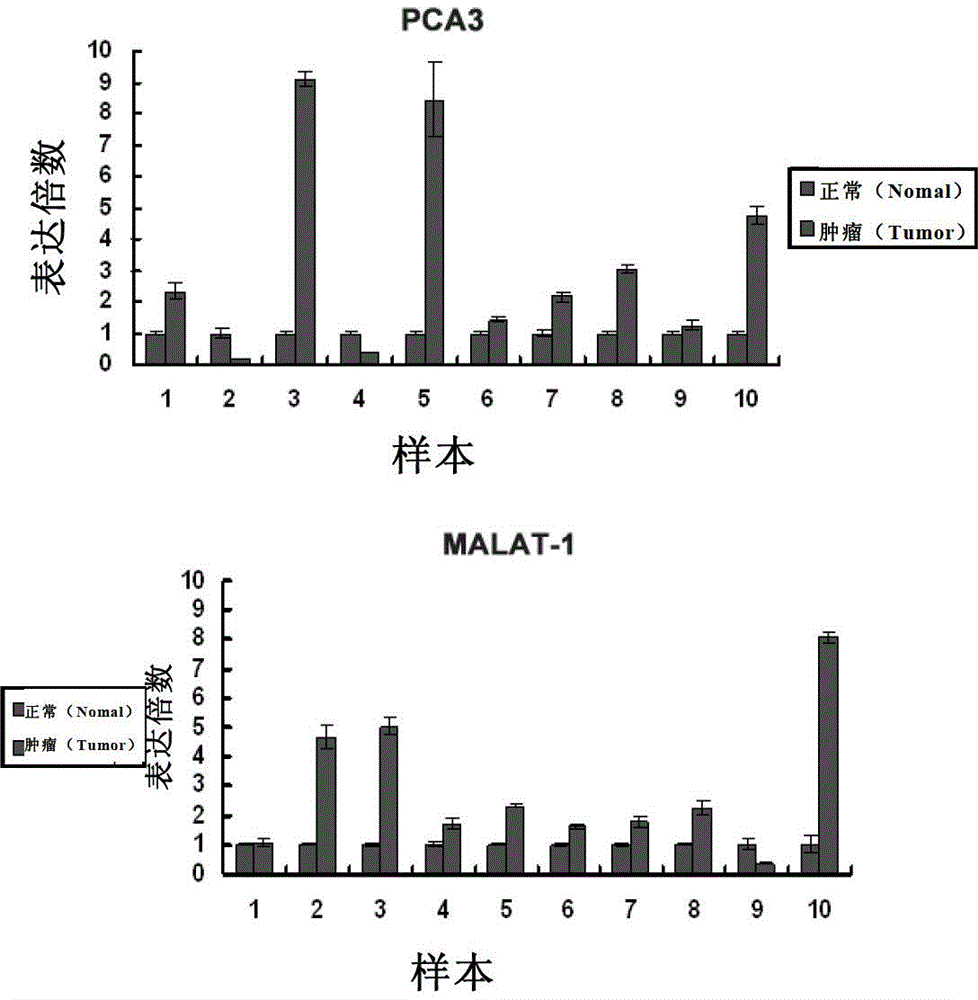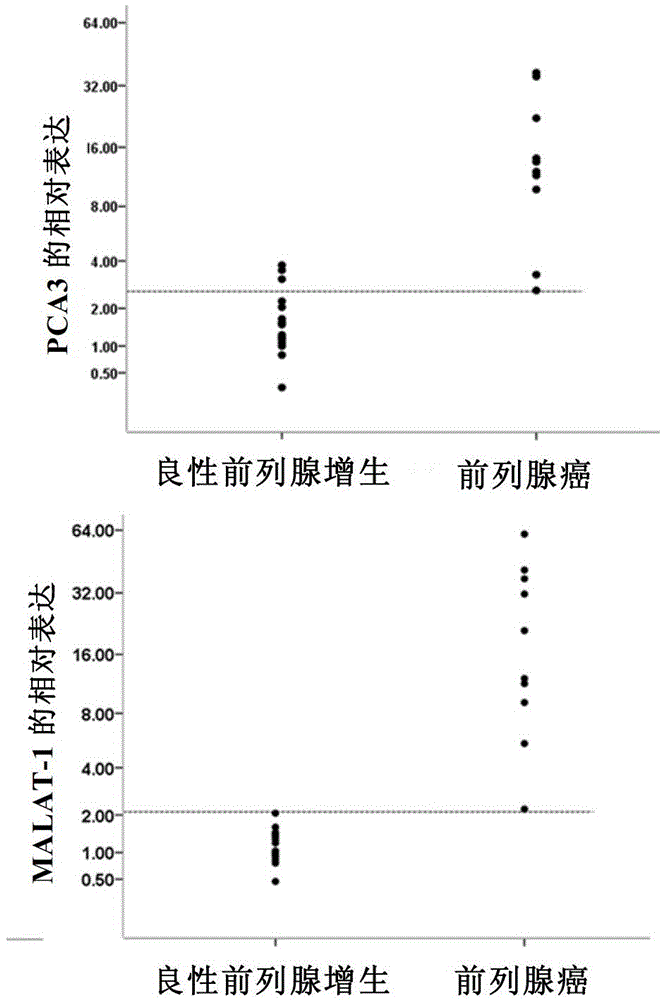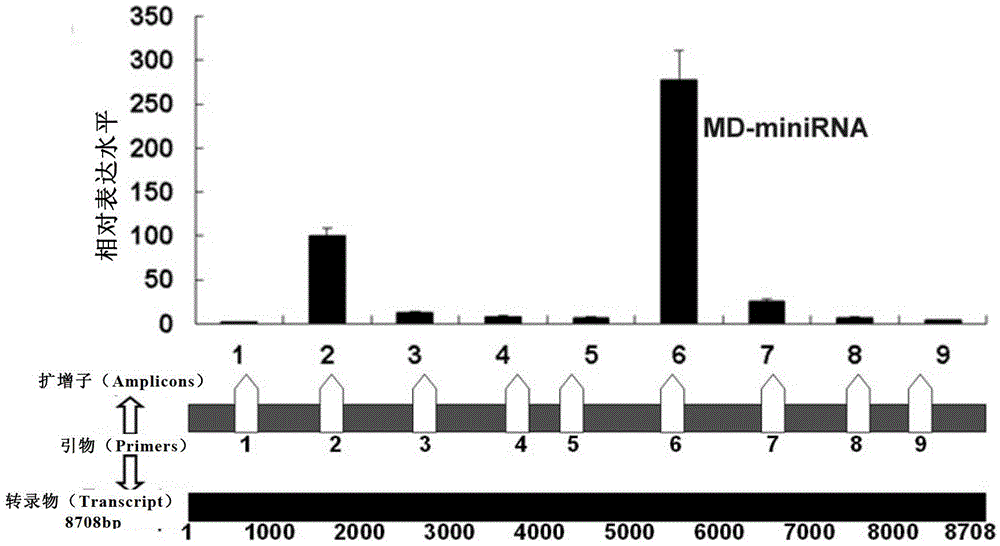Application of long-chain non-coding RNA as blood molecular marker for disease diagnosis
A technique for diagnosis of blood and cancer, applied in the field of molecular biology
- Summary
- Abstract
- Description
- Claims
- Application Information
AI Technical Summary
Problems solved by technology
Method used
Image
Examples
preparation example Construction
[0102] The preparation of the LncRNA chip can adopt conventional manufacturing methods of biochips known in the art. For example, if the solid phase carrier is a modified glass slide or silicon wafer, and the 5' end of the probe contains amino-modified poly dT strings, the oligonucleotide probe can be formulated into a solution, and then spotted with a spotting instrument. The miRNA chip of the present invention can be obtained by arranging in a predetermined sequence or array on a modified glass slide or a silicon chip, and then fixing it by standing overnight. If the nucleic acid does not contain amino modification, its preparation method can also refer to: "Gene Diagnosis Technology-Non-radioactive Operation Manual" edited by Wang Shenwu; J.L.erisi, V.R.Iyer, P.O.BROWN. Exploring the metabolic and genetic control of gene expression on a genomic scale. Science,1997;278:680 and Ma Liren, edited by Jiang Zhonghua. Biochip. Beijing: Chemical Industry Press, 2000, 1-130.
[010...
Embodiment 1
[0156] Embodiment 1 sample acquisition and processing
[0157] 1. Tissue specimens
[0158] All clinical tissue samples in this experiment came from Shanghai Changhai Hospital. The use of all specimens was signed by the patients or their trustees. All studies involving human specimens were approved in advance by the Ethics Committee of Changhai Hospital.
[0159] 14 pairs of prostate cancer and its adjacent tissues were used for RNA sequencing (RNA sequence, RNA-seq). Ten pairs of prostate cancer and its adjacent tissues and 15 benign prostatic hyperplasia (BPH) tissues were used to verify the RNA-seq results. The clinical data of the patients are shown in Table 4.
[0160] Table 4
[0161]
[0162]
[0163] 2. Plasma samples
[0164] Plasma samples from 25 different patients were taken from the Urology Department of Changhai Hospital to explore the biological characteristics of lncRNA or its fragments in plasma. The clinical data are shown in Table 5.
[0165] ta...
Embodiment 2
[0175] Example 2 lncRNA associated with prostate cancer
[0176] In the previous work, 14 pairs of prostate cancer and adjacent tissues were used for RNA-seq analysis to analyze prostate cancer-related lncRNAs. It was found that 406 lncRNAs were differentially expressed in prostate cancer and adjacent tissues, including the known PCA3 and MALAT-1.
[0177] Since PCA3 and MALAT-1 are known tumor-associated lncRNAs, this example further studies these two lncRNAs. Using 10 pairs of prostate cancer and paracancerous tissues to verify PCA3 and MALAT-1, it was found that these two genes were widely and highly expressed in prostate cancer tissues ( figure 1 ). Using 10 prostate cancer tissues and 15 benign prostatic hyperplasia tissues (BPH) for further verification, it was found that the expression levels of PCA3 and MALAT-1 in prostate cancer tissues were significantly higher than those in BPH tissues ( figure 2 ).
PUM
 Login to View More
Login to View More Abstract
Description
Claims
Application Information
 Login to View More
Login to View More - R&D
- Intellectual Property
- Life Sciences
- Materials
- Tech Scout
- Unparalleled Data Quality
- Higher Quality Content
- 60% Fewer Hallucinations
Browse by: Latest US Patents, China's latest patents, Technical Efficacy Thesaurus, Application Domain, Technology Topic, Popular Technical Reports.
© 2025 PatSnap. All rights reserved.Legal|Privacy policy|Modern Slavery Act Transparency Statement|Sitemap|About US| Contact US: help@patsnap.com



